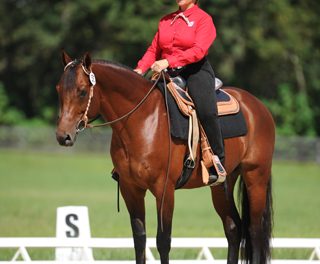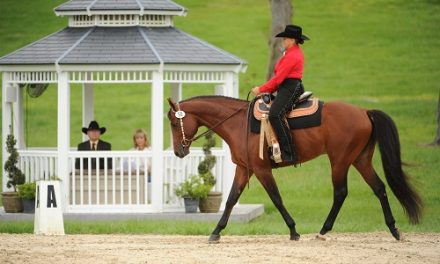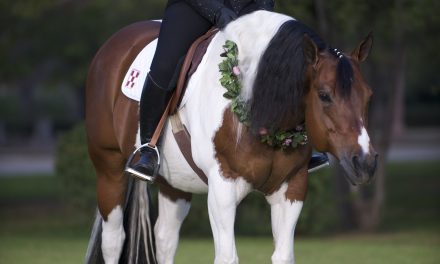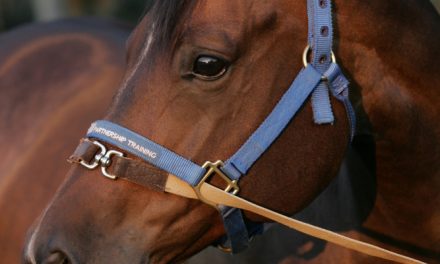BUILDING A PARTNERSHIP WITH YOUR HORSE
 In this article, we will continue our discussion of the bending and turning aids. The goal for both the bending and turning aids is to control the horse’s body position and balance. I have received many requests to describe in detail the role of these aids, and so I want to review the nuts and bolts of this very important issue in riding.
In this article, we will continue our discussion of the bending and turning aids. The goal for both the bending and turning aids is to control the horse’s body position and balance. I have received many requests to describe in detail the role of these aids, and so I want to review the nuts and bolts of this very important issue in riding.
I will start by explaining how the bending aids work to control the horse’s body. Besides being used for speed control, the leg aids (along with the seat) control two-thirds of the horse, from the withers to the dock. The right leg aids are the right calf muscle and lower part of the right leg. They control the right side of the barrel, right hip, and right hind leg. The left leg aids control left side of the barrel, left hip, and left hind leg. The rein aids control the remaining one-third of the horse from the poll to the withers. The right rein controls the right side of the horse’s head and neck, right shoulder and right front leg. The left rein controls the corresponding parts on the opposite side of the horse’s body.
We call the inside leg the “bending aid.” On a curve, the rider applies inside leg aid pressure slightly behind the girth. The horse, through buildhis training and instinct, moves away from the pressure of the aid. This “curves” the barrel by compressing the muscles on that side as the spine curves in the direction of the turn, giving what we call “bend.” When the rein aids are applied, the horse gives to the rein pressure and flexes his head inward. His neck slightly bends and the shoulder slightly moves to the outside. This curves the spine from the poll to the withers. Now you can see why they are called the bending aids!
The outside leg and rein aids are also important to support the bend. In order for the bend to be balanced, the horse moves his body toward the outside aids. There has to be a slight pressure with the outside leg, slightly further back from the girth than the inside leg. This supports the horse so his hips do not swing outward, but rather stay slightly in. This keep his spine curved on the bend through the hip to the top of the tail. The outside rein is against the neck. It has three functions—to support the head so it does not flex too far inward, to help keep the neck from bending too much, and to make sure the shoulder does not go out.
Now we will look more closely at the turning aids and how they control the horse’s body. Instinctively, most riders (including me) want to turn the horse with the inside rein. Many riders do just that and pull their horse’s head toward the direction they want to turn. If a horse is turned only with the inside rein, however, it puts all of his weight onto the inside front leg. His hips will swing out and away from the direction of the turn. This method of turning only leads to getting poor responses from the horse. Typically, a horse that is turned this way will begin pulling back against the inside rein, resisting by putting his head up, and not turning or turning too sharply to the inside, or turning with an excessive amount of bend in his neck. None of these scenarios represents a horse in balance. To turn correctly, you must get the horse bending correctly first.
The turning aids always start with the leg because it controls more of the horse. Pressure from the outside leg aid is applied behind the girth. This causes the horse to move away from the pressure to turn. The outside rein is used against the neck (called “neck” or “indirect” rein) and acts as the horse moves away from the pressure of the rein. Apply this rein aid by “turning the key” with the outside rein (neck/indirect) so it touches the entire neck. Avoid crossing the rein over the neck when applying this aid. Use a pulsating pressure with the hand that is turning the key according to the gait that you are in.
As you begin a turn, the turn must be supported with the bending aids:
1. the inside leg gives a light supporting pressure right behind the girth, and
2. the inside rein supports so that the horse’s head and neck stay flexed slightly inward. As you look at the horse’s head on the side you will be turning, you just want to see his eye. The inside rein stays open to keep the head and neck flexed.
If you are using your aids correctly, the inside rein should be the lightest and least prominent aid given while turning. However, if you turn with the inside rein, you will feel the horse heavy and resistant.
In the next article, we will discuss how to correct some common faults in bending and turning. In the meantime, my visual series, Dressage Principles for the Western and English Horse and Rider will enhance these articles on Communicating with Your Aids. For more information on this and other Palm Partnership Training™ products, or information on clinics, go to www.lynnpalm.com or call us at 800-503-2824.





